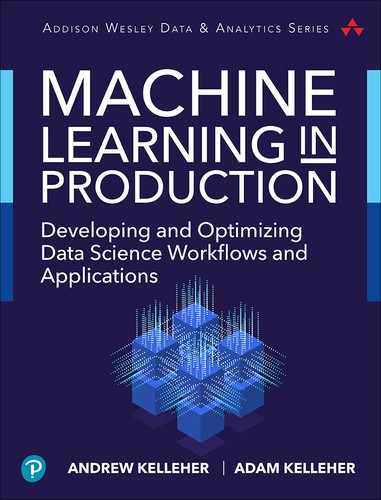I. Principles of Framing
Chapter 1, “The Role of the Data Scientist,” provides background information about the field of data science. This should serve as a starting point to gain context for the role of data science in industry.
Chapter 2, “Project Workflow,” describes project workflow and how it relates to the principles of agile software development.
Chapter 3, “Quantifying Error,” introduces the concept of measurement error and describes how to quantify it. It then shows how to propagate error approximately through calculations.
Chapter 4, “Data Encoding and Preprocessing,” describes how to encode complex, real-world data into something a machine learning algorithm can understand. Using text processing as the example case, the chapter explores the information that is lost due to this encoding.
Chapter 5, “Hypothesis Testing,” covers this core skill for a data scientist. You’ll encounter statistical tests and p-values throughout your work, and in the application of algorithms like least-squares regression. This chapter provides a brief introduction to statistical hypothesis testing.
Chapter 6, “Data Visualization,” is the last subject before the unit on machine learning. Data visualization and exploratory data analysis are critical steps in machine learning, where you evaluate the quality of your data and develop intuition for what you’ll model.
